This is rosé season. Or should be. We’re having a rather cold spring in Paris. Rosé has in recent years become incredibly popular. Incredibly is the right word. So let’s take a look at how rosé is made. This seems to be needed; it seems to be a very misunderstood area…
There are three ways of making rosé:
- Direct pressing
- Maceration
- Blending
The three methods are different and have different effects on the result. Let’s take them one by one.
But first, some basic facts. All rosé made of red grapes. Sometimes, but very rarely, it is done on a blend of red and white grapes. I will come back to this later.
The colour is in the skin. All colour is in the skin of the grapes. The juice that comes from the flesh is colourless. There are a few exceptions; grapes with coloured flesh (called “teinturiers”), but they are not used for rosé. So to give the wine a “rosé colour”, ie something between a white and a red wine, the skins must be included in the winemaking for some time in order to extract some colour. But the skin must not be used for too long a time for the wine not to simply become red.
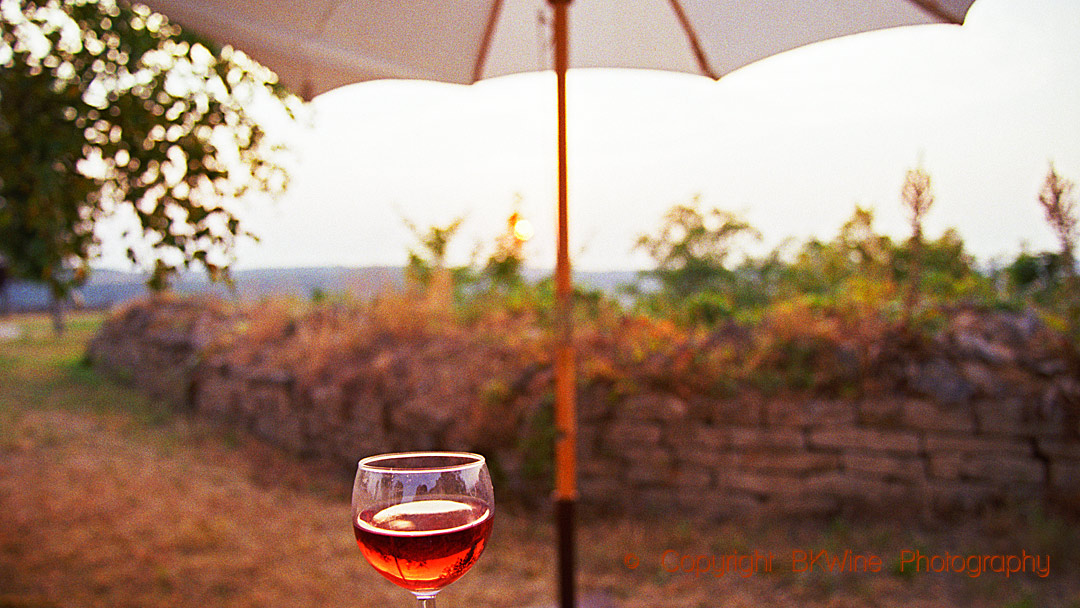
1. Direct pressing
The method that is called direct pressing is basically the same process used when making white wine. The freshly harvested grapes, red grapes, are put into the press. The the grapes are pressed. During the pressing some of the colour is leeched out from the skins and gives colour to the must.
This usually makes a fairly light-coloured rosé. The skins are used for only a short time at the pressing. The skins are not at all included during fermentation. (If you include the skins during the fermentation, the colour becomes stronger. When the wine ferments the alcohol level increases. Alcohol makes the leaching more efficient. This avoided when doing direct pressing. More on this in the next section.)
How strong the colour becomes when doing direct pressing depends partly on how slowly the grapes are pressed, the amount of pressure used, and, of course, perhaps most importantly, what kind of grapes it is.
It is also a method used to get a lot of freshness and fruit aromas in the wine.
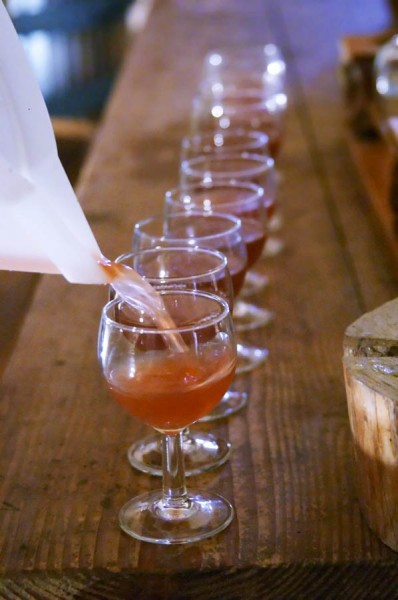
2. Maceration / leaching
“Rosé de maceration” is done by first lightly crushing (red) grapes after the harvest before pumping them into the fermentation tank. It is exactly the same method as when you make red wine, but with the difference that to make rosé you remove the skins before the fermentation is finished. This makes it rosé instead of red.
The crushed grapes begin to ferment in the tank. The leaching, that gives the colour, can be very effective, so the time on the skin is often not long. It may be just a few hours, up to a maximum of a few days.
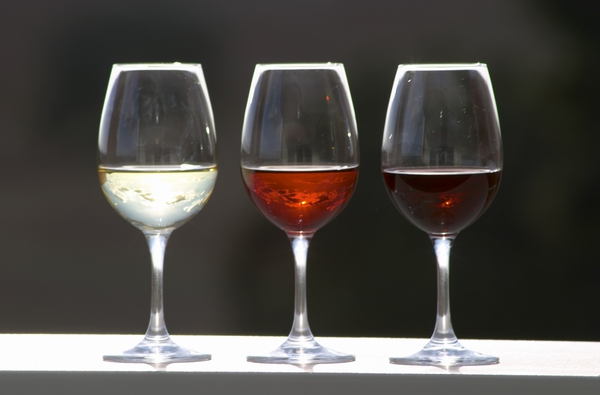
The colour is of course also very dependent on the grape variety and on other things. For example the fermentation temperature (higher temperature gives more rapid leaching) and how fast fermentation is (a rapid fermentation, with a rapid increase in alcohol, gives stronger leaching).
When you think you have enough leaching, ie the right colour, you empty the tank and the must can then finish fermenting without the skins.
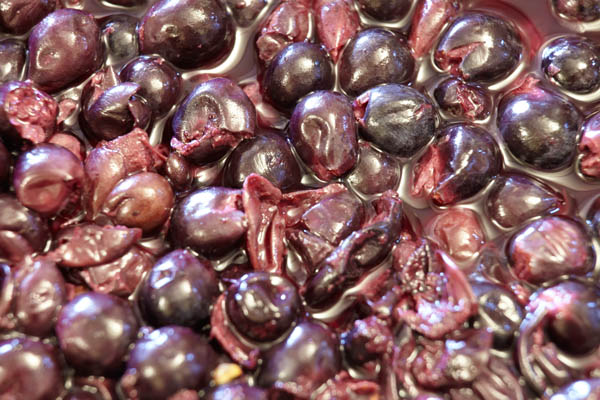
Saignée, a special case
A variant of the maceration method is what is called “saignée” in French, or “bleeding” in English. It’s probably the method one hear most about, perhaps because the name sounds so odd.
A rosé de saignée is actually a by-product of red wine production. The red grapes, which will become red wine, are crushed and put in a tank. The fermentation begins. After a certain period of time (a few hours to a few days) a part of the must drained off from the tank. Only a little colour has yet been extracted. This is fermented in a separate tank to rosé.
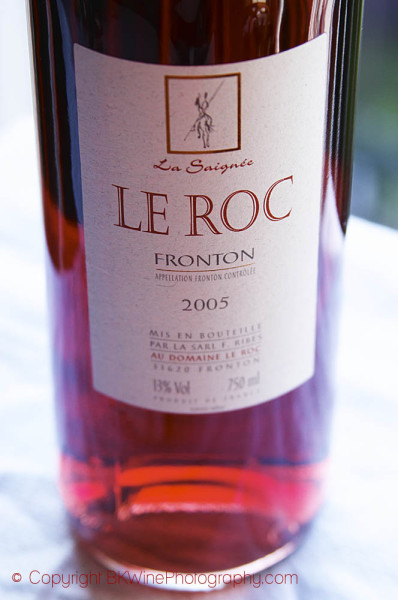
The rest of the must is left in the tank, along with the skins, and allowed to ferment to red wine (the difference with “regular” rosé maceration is that in that case you draw off all the must). The red wine becomes more full-bodied, richer and with more colour because there is more skins in relation to must left in the tank. Is actually this increased concentration of the red wine that is the main purpose of this method. In other words, rose de saignée is a by-product in red wine production.
Because the grapes for saignée are harvested when they are ripe for the red wine, the main product, they are often a little overripe compared with what would be ideal for rosé. Such a rosé can therefore become a bit overly heavy, and may lack in freshness.
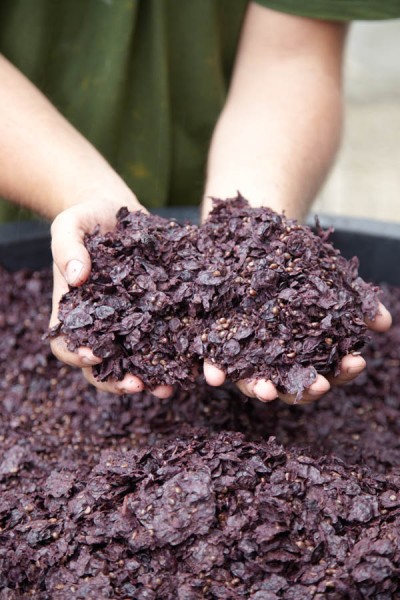
If rosé is the main product, which it is in direct pressing and the “regular” rosé de maceration, the harvest is often a little earlier to keep more acidity and freshness. In that case it is not so important that the tannins have time to become really ripe, since very little tannins are leached from the skins when making a rosé. For rosé it is not so important to wait with the harvests until full phenolic maturation is reached. For a red wine it is however very important that the tannins are mature enough, otherwise the wine can be harsh and rough (“green tannins”).
Clairet, another special variant
Clairet has become more and more popular, deservedly, since it is one of the most characterful rosés. It’s not really a separate vinification method but rather a wine style.
Clairet is only made in Bordeaux. It is a type of rosé wine with a very strong colour. It is made with a comparatively long maceration and with the saignée method. The colour is so strong that the wine has about the same colour as some red wines made in the northern regions, for example, red Alsace or Sancerre, sometimes even darker than these.
(Note that the spelling is different from “claret”, the traditional English word for red bordeaux.)
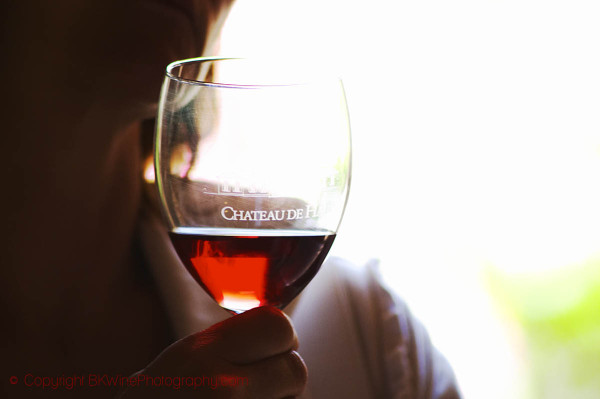
3. Blending method
One can also make rosé wine by mixing red and white wine. You start with a white wine and then add a dash of red, perhaps around 10% of red wine, depending on how much colour you want.
The blending method is banned in the EU, except for champagne.
A few years ago it the rules were going to be changed so that it would be legal to make rosé by blending in the EU. However, there was so much opposition from some winemakers, particularly from existing rosé wine growers (which I assume were worried about increased competition) so that the proposal was shelved. Unfortunately. As is often the case wine producers (not only in France!) are keen to restrict competition. Blended rosé is therefore still banned in the EU but allowed in some other countries.
Rosé Champagne
For Champagne it is permitted to make rosé by blending in a little red wine in a white wine. It is the traditional method of making rosé champagne. Between 7% and 15% of red is the usual amount.
But it is also allowed to make rosé champagne by maceration. It has become a bit of an emerging trend today in Champagne to use the maceration method. It produces champagnes that are more powerful, rosé champagne with more colour, more fruit, more body.
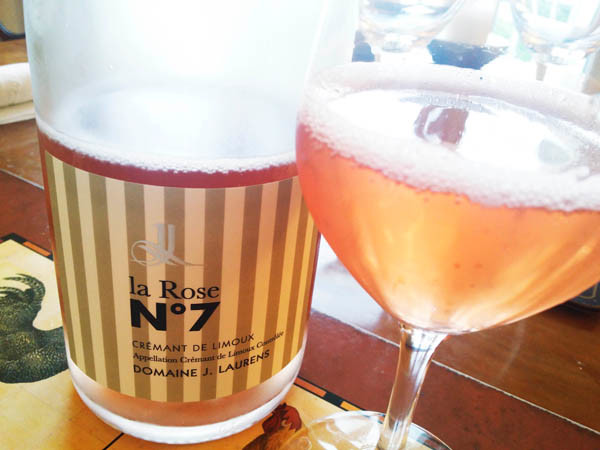
Myths and misconceptions about rosé
Here it might be appropriate to clarify a few things.
Taché
Contrary to what is sometimes said there is nothing in champagne called “méthode taché” (at least a never used expression) although we have sometimes seen mentioned in texts. We have met hundreds of champagne producers and no one uses that term. However, “taché” (stained, in French) is a word that can be used for a white wine that accidentally get a little bit too much colour. But this is not specifically for champagne. However, there is a wine producer in Australia that uses “Taché” as the brand name of its sparkling wine.
White Rose?
No, you cannot make rosé of white grapes by pressing them extra hard. An odd idea.
“Rose is easy to make”?
The colour is hard to control, but extremely important. This and other things that need to be carefully controlled, eg harvest time, causes many winemakers to say that rosé is the wine that is the most difficult to do well. Contrary to what some might think it is not easy to make rosé, “you just let it become something between white and red.” No, hardly. On the contrary, rosé is hard to do.
More about champagne, 2009, and the EU
Champagne rosée has always been made by mixing red and white. Blending champagne rosé is not something that has been permitted since 2009. It is the traditional process. However, it was in 2009 that there was a great debate between the EU’s agricultural commission, which wanted to allow blending and traditional rosé producers, who wanted it to still be banned. The protectionist rosé producers won and it is still forbidden to make rosé by blending red and white.
The saignée method is not used for champagne rosé. Saignée is used when red wine is the main product. That’s not the case in champagne. Update and correction: I should say that saignée is rarely used in Champagne. Some producers who make red wine do make a saignée. But there are also other producers who call their rosé saignée but seem to use it as a synonym for rosé de maceration, so not a “proper” saignée.
Many champagne producers believe that they get the best rosé champagne with the blending method. (Therefore it is a bit difficult to understand why it should be so terrible to do it for still wines.)
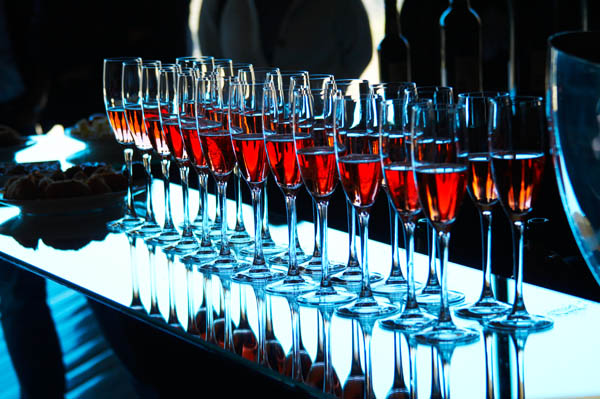
Sugar and rosé
Many rosé wines are (unfortunately?), more or less sweet. Often the most popular wines are made in a style that might be called semi-sweet or semi-dry. The sweetness usually comes from that the fermentation is interrupted before all the sugar is eaten by the yeast. This is done by sterile filtration and with appropriate doses of sulphur.
Rosé from white grapes?
Since it is not allowed to make rosé by blending red and white wine (in the EU) almost all rosés are made exclusively from red grapes, where the colour is only partially extracted from the skins. (With the exception of champagne.)
But there are also cases when white grapes are used in the making of rosé. In that case they mix the red and white grapes in the beginning of the vinification, because it is forbidden to do so in the end (blending finished wines wines).
Colour
Perhaps the most important quality or selection parameter of a rosé wine is the colour (they rarely have particularly prominent or sophisticated nose or flavour).
Choosing the hue of the wine is one of the winemaker’s most important decisions when he makes rosé. But it is not always easy to get the result you want. It can be a question of only a few hours between a too light colour and a wine that has become too dark compared to what you want. What further complicates the matter is that the colour changes over time, for instance because of the precipitation of the sediment during the fermentation and due to different processing aids, such as added sulphur at bottling (to maintain the wine’s freshness and stability).
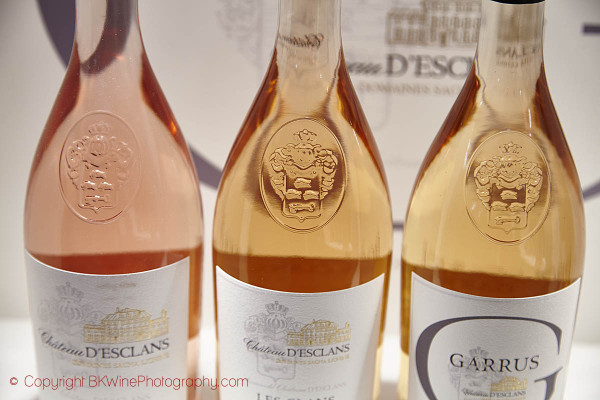
Rosé wine’s hue can go from a barely visible shade pink, such as the “world’s most expensive rosé” (not necessarily the best), Garrus, to something that is more of a light red wine. The hue is extremely important. Different markets prefer different shades. In France, consumers often want to have a very lightly coloured rosé. But even here the make some strongly coloured rosés, e.g. Tavel, the rosé wine district. In Spain, they want their rosados to be dark.
The colour is also an important signal to the buyer as to the style of the wine; a lighter colour rosé is expected to be a lighter wine; darker colour for a more substantial wine. Often a darker rosé has both more aromas and flavour, so the trend to very light rosé wines (sometimes both nearly colourless and tasteless) is perhaps something to regret.
A popular wine
Rose has in recent years become extremely popular. Both still rosé and sparkling (champagne and others) are selling like never before. Almost all of Provence, the largest rosé region, has switched over to rosé production. In Bordeaux do today they make more rosé than white. It is in many ways quite regretful. Provence makes some great red wines, but rosé sells better. White Bordeaux can be one of the world’s great white wines, but is almost disappearing and rosé is gaining ground. High-quality white and red wines are squeezed out by rather humble and neutral rosé wines.
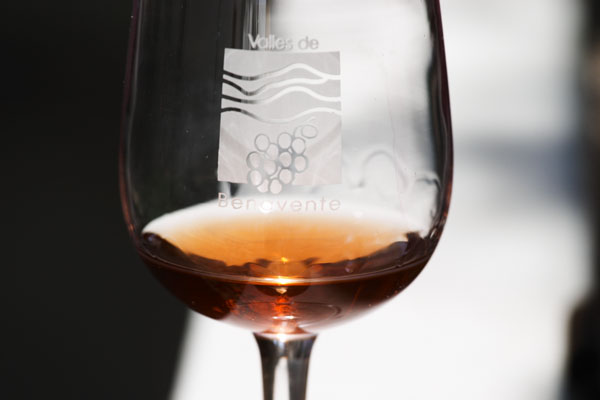
What this boom comes from is hard to know. Of course trends, fashion and perhaps changing consumption patterns. Another contributor is not doubt that it has become almost mandatory in wine columns for wine writers to praise rosés with words like ” rosé is now up there with the great wines” and “the time when rosé was just a dull second choice is gone, now rosés are quality wines”. Why so many wine writers, who usually praise quality wines, all of a sudden are heaping praise on (often quite mediocre) rosés is also a mystery.
But of course rosé can be delicious to drink. Often refreshing and nice. Not too demanding on the consumer. (Maybe this is the answer?) It can be a nice option in some situations. But it is rarely memorable. It is not often one thinks “this food would be perfect with a rosé”, is it? Except maybe for salad on a hot summer day… Can you remember the last time a rosé gave you a great wine experience? Can you remember what the wine was called? I do not. Leave a comment if you remember.
Or as Jack, BKWine Magazine’s news reporter in Stockholm, says: “there is always a better white or a better red option”!
What do you think? Write a comment!


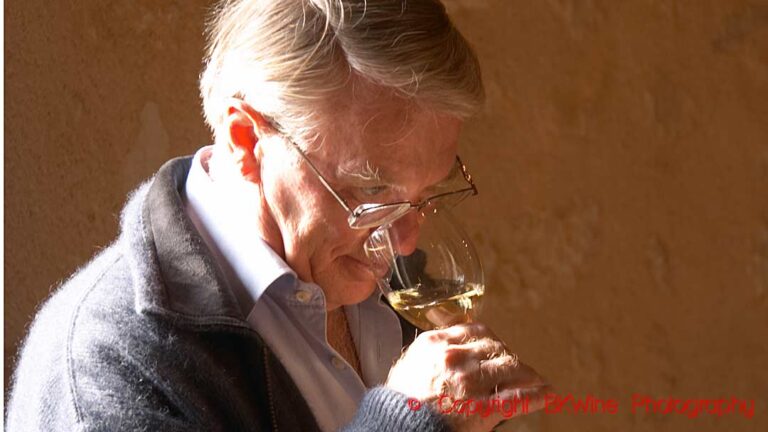
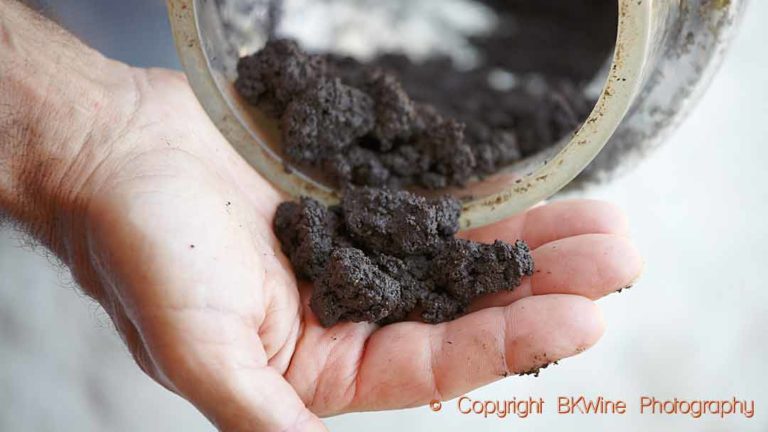
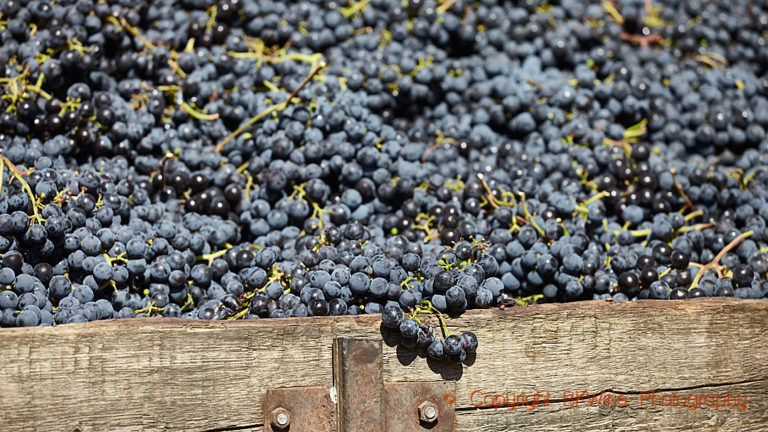





10 Responses
Hi there!
I have been searching the entire internet sources (filtering out the good ones, like yours!) in order to find out the truth about the use of blending red and white wines in order to make rosé sparkling in the EU. I’ve read your article with great attention and have come up with 2 questions:
1. You mention that “Blended rosé is therefore still banned in the EU but allowed in some”. But you don’t name where in EU, this method is allowed. The phrase has no fullstop and seems unfinished. OK, apart from Champagne, the big exception which allows this method of making sparkling rosé, WHICH other regions DO ALLOW it?
From my personal research, I actually understand that this method IS ALLOWED in EU for PDO and PGI still wines (still banned for table wines without indication of origin) and for sparkling and semi-sparkling wines, regardless of indication of origin or not. The following link mentions also the sources that support this opinion:
https://www.winenous.co.uk/wp/archives/2496
Examples which (in my opinion) allow it (i.e. they do not explicitly forbid it in their production codes) are:
– Franciacorta rosé
– Crémant de Limoux rosé
– Clairette de Die rosé (since 2016)
– Crémant de Loire
– Cava rosé
2. Rosé from white grapes.
In this section, I have the impression that (at least for sparkling wines) the rule of thumb (and not the exception) is that WHITE grapes participate in the rosé (see Chardonnay, Chenin, Muscat à petits grains, Macabeo, Xarel.lo, Parellada, Pinot blanc, etc). The question is, though, when does the mixture of white and red grapes happen:
– at must level (co-fermentation with maceration for rosé colour from the red), or
– at wine level (blend of white and red wine, before or after the prise de mousse?)
Again, my personal conclusion is that once rosé sparkling wines in EU appellations allow white grapes in their blends, the easiest method is the blending of the wines, than the blending of the musts, since the various grape varieties usually ripen at different periods of time…
Looking forward to hear your opinion on these,
Best regards,
Angeliki Tsioli
Yes, that phrase is missing the end. A translation error. It should end “allowed in some other countries” which is what it says in the original Swedish text. (I have now corrected it in the text.)
As far as I know, it is not at all allowed for still wines in the EU for any type of wine. The article you refer to argues that it is, in particular that it is allowed for PDO and PGI (“quality”) wines. I am not sure that this is correct. I think it is not. I find the argument unconvincing. But one would have to dig deeper in the EU texts to find the proper documentation.
I would be very surprised if the argument in that article is correct and would be very interested to know if it is.
It’s an interesting point about other sparkling wines than champagne. I am not sure what the situation is here, but it seems to me more likely that blending for rose’ could be allowed here (as it is for champagne). That should be pretty easy to verify by contacting some producers or the official regulatory bodies for those appellations.
I’m not quite sure I understand your second question, but maybe it’s this:
If we assume that blending red and white to make rose’ (for STILL wine) is forbidden, it is still possible to make still rose from red AND white grapes. In that case, as far as I know, you should blend the red and white grapes at harvest, i.e. as grapes, or possibly as unfermented must. But I am not sure what the exact rules are.
I recall having discussed this with someone (but I don’t remember who). But then again, one can never take only one person’s word for anything in the world of wine. In most cases one has to go back to the texts with rules and regulations (on EU level or on a national or local level) to get to the real truth…
When it comes to making rose sparkling wine (at least champagne) the normal blending method is to blend the finished still wines, before bottling and prise de mousse. Maybe around ~10% red goes into the white. But some also do rose champagne with the direct press method.
One suggestion is that you contact the EU agricultural organisation for more clarification on the PDO/PGI wines (or perhaps the OIV ;-) ).
Thank you very much for your answer.
It is indeed an interesting subject. I will get in contact with the EU to find out about the use of the blending white and red wine, although it is quite clear stipulated in the article 8 of the EU regulation 606/2009. Sometimes, it’s good to know what hides behind a phrase; I know it from personal experience with regulations and resolutions since I worked for a period for the OIV office and participated in the meetings of the EU wine commission…
As far as OIV is concerned, the blending of musts and wines from various grape varieties/regions is an allowed method for sparkling wines since 1980:
https://www.oiv.int/public/medias/3687/e-code-ii-415.pdf
Conclusion: if my assumption is true that “for sparkling rosé wines produced in the EU the blending of red and white wines is allowed”, then each specific production code (CAVA, Franciacorta, Crémants de x…) has to specifically indicate if they do allow the blend of red and white wines or not (they may be stricter than EU right). Until now, I have found that the blending of white and red wines is not forbidden in most of the EU appellations for their sparkling, with Crémant d’Alsace being the main exception (100% Pinot noir, base wine made as rosé) and Cava allowing for the base wines to be either white or rosé, meaning that the blending is not allowed (my interpretation).
I’ll come back here, if I have any further infos on the subject and I would be more than happy to discuss it further with you!
Thanks for the opportunity!!
I don’t understand your reference to article 8 of the EU regulation 606/2009. This is what it says:
#######
Article 8
General rules on blending and coupage
1. A wine may be obtained by blending or coupage only where the constituents of that blending or coupage possess the required characteristics for obtaining wine and comply with Regulation (EC) No 479/2008 and this Regulation.
Coupage of a non-PDO/PGI white wine with a non-PDO/PGI red wine cannot produce a rosé wine.
However, the second subparagraph does not exclude coupage of the type referred to therein where the final product is intended for the preparation of a cuvée as defined in Annex I to Regulation (EC) No 479/2008 or intended for the production of semi-sparkling wines.
2. Coupage of a grape must or a wine which has undergone the oenological practice referred to in paragraph 14 of Annex I A to this Regulation with a grape must or a wine which has not undergone that practice shall be prohibited.
#######
To me, this does not say that it is allowed to blend red and white to make rose’. This article does not refer to rose’ specifically, but to all wines, so I don’t understand how this could be interpreted as meaning that blending for rose is allowed.
It seems that it is correct that the proposal in 2009 was to ALLOW blended rose for wine WITHOUT geographic indication:
https://efow.eu/white-wine-mixed-with-red-does-not-make-rose/
But it also seems to be the case that the rules for rose WITH geographic indication DOES NOT ALLOW blending because that method is not compatible with making “quality wine”…. (Except for sparkling.)
It is not explicitly stated by can be inferred from this same text.
I wonder where that rule comes from. If it is systematically implemented in local rose regulations, or if it is a rule on EU level that prohibits blending red and white.
I know of no example where a “blended rose” is made in the EU (excluding, of course, rose wines). Do you know any still EU rose wine made by blending?
The OIV then complicates the matter further by saying this:
“4. Blending of musts or white and red wines: This practice is subject to different
regulations depending on the country. Within the EU, this practice is not permitted for wines without a Geographic Indication, is controlled (or not) under the specifications for wines with Geographical Indications and is authorised for sparkling wine production; however, it is more commonly used in the rest of the world. In addition, white wines may be enriched with coloured concentrated musts to obtain a rosé wine.”
(https://www.oiv.int/public/medias/3103/focus-2015-les-vins-roses-en.pdf)
A bit vague, indeed.
Please let me know if you find out why blending for rose also for wines with geographic denomination is prohibited. Is it all due to local regulations, or is there some EU rule?
Thank you for an interesting article on a subject I agree is often somewhat misunderstood. But I think a general EU-ban on blending white and red wine for still ros� wines is part of that misunderstanding.
EU regulation 934/2019 (supplementing regulation 1308/2013) coverning the authorised oenological practices clearly states that blending of a white wine and a red wine to make a ros� wine is only prohibited for wines without PDO/PGI. And that rule does not apply if the intention of the blending is to make a cuv�e for a sparkling wine.
So, for still wines as far as the general EU-rules go blending is okay for PDO/PGI wines and for sparkling wines even for wines without PDO/PGI. This understanding was confirmed to me directly in an e-mail from the EU-office in Bruxelles.
I believe the proposal you refer to, was the proposal to lift the ban for the still wines without PDO/PGI which would leave a whole new opportunity for blending really cheap white and red wines which a lot of European wine bodies saw as a threat to their businesses.
The single EU member states and of course the specific production rules for PDO/PGI wines can then have rules that forbid the blending in question. But I believe that if a member states general wine laws or the specific regulations for a PDO/PGI does not explicitly either forbid the blending of a white wine and a red wine or have specific regulations for allowed methods then it is legal.
Thomas,
Thanks for the comment. This sounds interesting and curious. Will have to look into this. Currently travelling so it will take some time.
Per,
No haste at all. My browser/device didn�t allow me to see the long communication above in the first place, but I now understand it is an old discission
In the meantime � having now read the comments above � allow me to clarify a few things.
The EU-regulation is in my opinion actually quite clear. The argument that the regulation and paragraph sited above does not say that blending is allowed for still PDO/PGI wines is to me a bit odd. That would be the same as saying that since the EU-regulations does not specifically allow prolonged maceration of white grapes (at least I could not find anything indicating this in any of the EU-regulations governing wine) all orange wines are not allowed! Why would the regulation state that blending of white wine and red wine is NOT allowed for still wines without geographical indication if this is the norm and disallowed for any wine?
It is to me much more logical that the specific mention of this is necessary exactly because that blending otherwise is legal. I believe that the overall logic behind this (also recognized by IOV in the quote above) is that the allowed practices for PDO/PGI-wines can be controlled through their production regulations whereas the practices for wines without geographical indications in practice are governed by the EU-legislation.
Anyway, to rule out any doubt some years back I wrote to the EU-authorities in Bruxelles and asked if the interpretation was correct. The response was clear: �I can confirm your understanding is correct. The provision that you quote allows to make ros� still wines with a PDO/PGI by blending (coupage) of a red wine and a white wine�.
So: there are no general EU-legislation prohibiting blending white wine and red wine in order to achieve a ros� wine except for still wines without geographical indication. That is of course not the same as saying that there are actual ros� wines in EU where this is allowed since it all depends on the specific � and potentially more restrict � member state laws and the regulations of production for each PDO/PGI wine.
Well, we already know that champagne allows the practice, and another example is cr�mant de bordeaux where the regulations specifically state that the ros� version can be made either by saign�e, maceration or blending of white and red wine before tirage. France apparently does not have a general prohibition of the practice. Neither does Italy. An example here is the IGP Toscana that can be made of all grape varieties allowed in the region of Toscana (which includes a bunch of both red and white varieties). The regulation of production does not mention any specific rules for the methods allowed for the production of the still ros� version of this wine hence the blending og white and red wine is allowed since neither Italian or EU-legislation prohibit this.
I am pretty confident that there are many other examples out there but also pretty sure no one has the full overview over the many hundreds of European PDO/PGI-wines.
Concerning the mentioned protests and discussions back in 2009 my understanding of the situation is, that this has been misinterpreted as a heroic fight for wine quality. First of all: why would blending of white and red wine make a less good wine per se? One of the most famous and expensive ros� wines namely the champagne version is very often made this way. Is there something very special with sparkling wines that makes is possible to make a top quality wine by blending whereas the same practice makes it impossible to make a quality still ros� wine? Maybe, but I have never seen this explained.
Instead, the protest was � in my interpretation � mainly about business. Allowing for the blending also of wines without geographical indication would be a serious threat to the producers of PDO/PGI-wines � both those where you can not use the method and those were it is actually allowed. They managed (by using the quality argument) to stop the lift of the ban.
A final comment. We maybe need to distinguish between the rules for the MAKING of a ros� wine and the rules for the LABELLING of such a wine. I know that Austria has a rule that says that to use the ros� term on the label the wine can only be made of red varieties. I tasted a fully legal Austrian wine last year made by blending white wine and red wine but the producer could not call the wine ros� � at least not officially in writing I have heard that Germany has the same rule but haven�t found it myself.
Thanks for this helpful article. However, I am surprised by your statement that “The saignée method is not used for champagne rosé. ” because I have enjoyed several rosé champagnes that have been labelled by their producers as “rosé de saignée”. And a quick online search shows many such wines.
Remember that red wine is needed for all blended rosé champagnes (and also bottled as red Coteaux Champenois wines) so I find it quite plausible that Rosé de Saignée champagne is produced as part of a red-wine making process.
Both yes and no, I’d say. To some extent I think it is a question of confusion of terminology.
It seems to me that many producers who call their champagnes “rosé de saignée” are actually referring to a rosé made by maceration (as opposed to blending). So, in this case it is not a “proper” saignée.
But, of course, it can happen that someone does a “proper” saignée also in champagne, makes it as a byproduct to a red wine. For example, I think Geoffroy makes one in this way and also, if I remember right, René Rutat.
So, you’re right, the text is too categorical. I have amended it. Thank you.